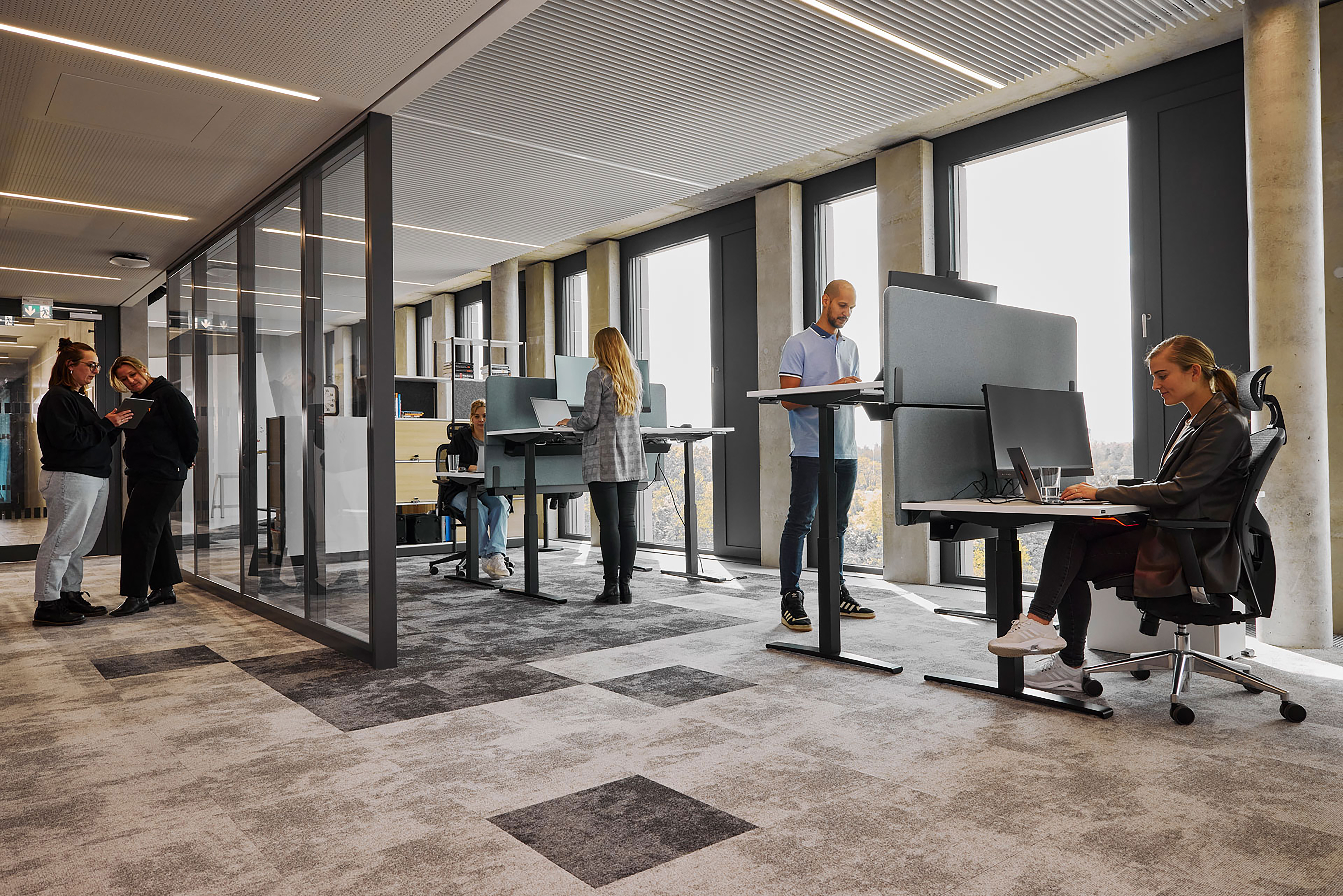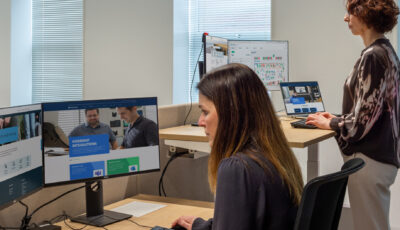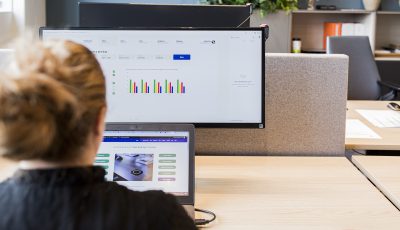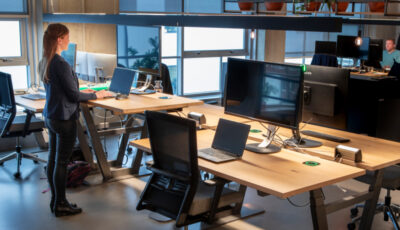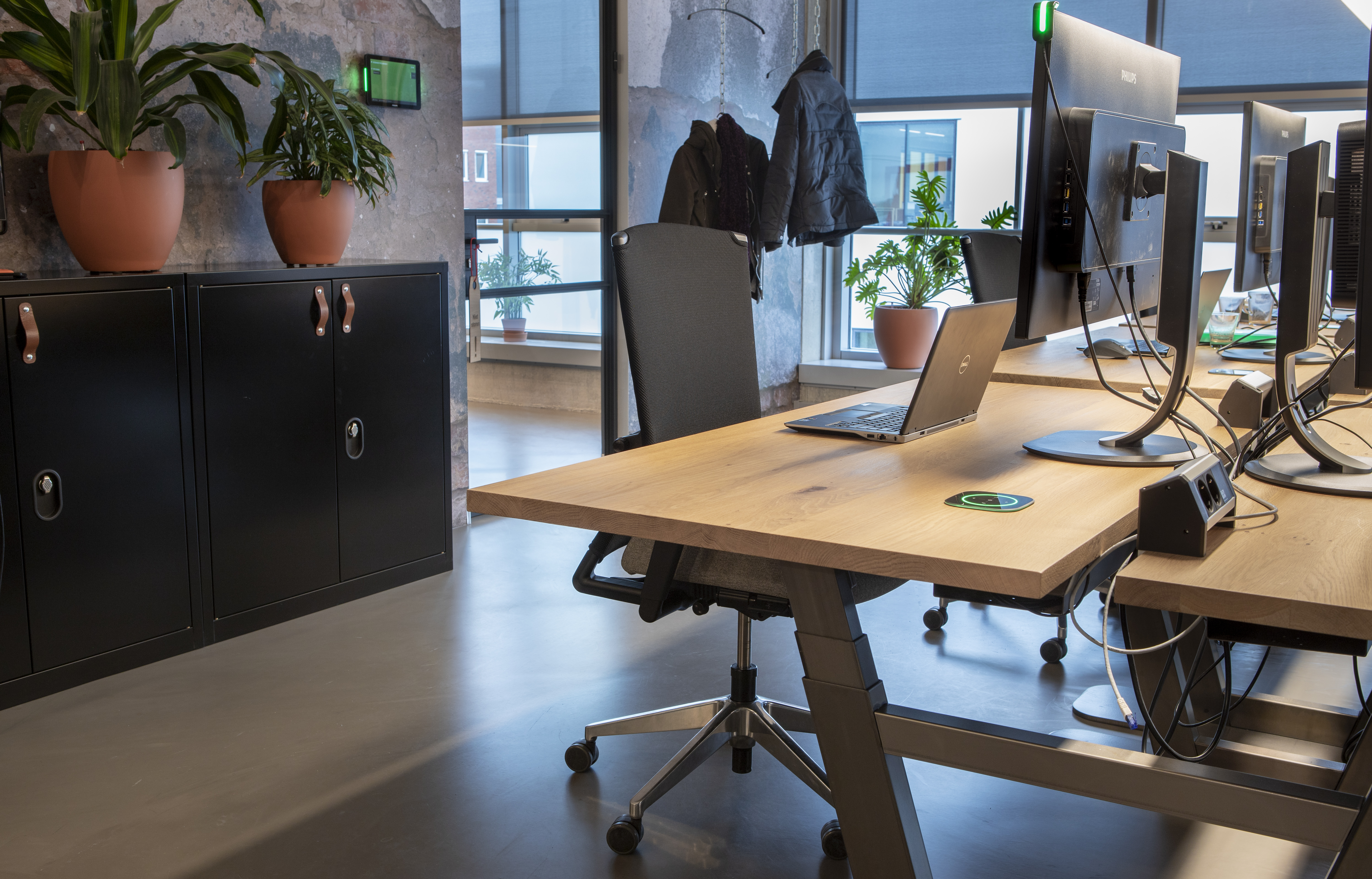With flexible working schedules being the new norm, it’s becoming increasingly popular for employees to regularly work from home. The working environments have changed drastically, as well as people’s ways of working. With this development, many employers logically start to wonder what the effects are on their employees’ productivity. Although the overall productivity of employees seems to be increasing thanks to flexible working arrangements, there are still a few things you can do to further optimise your working environment. This article will tell you everything you need to know about how to improve productivity in the new workplace.
Which factors affect employee productivity?
Before deciding on how to increase work productivity in a hybrid working environment, it is important to first know what factors drive employee motivation and productivity. What can you do as an employer or colleague, and how does the working environment affect productivity?
Company culture
According to a study in 2021, the most powerful factors to influence employees’ productivity are conflict, solidarity, creativity, and goal clarity.
In all workplaces, especially those that are hybrid, conflicts are inevitable. Different personalities, opinions, cultures, and experiences sometimes clash and this can cause a multitude of miscommunication and misunderstandings. Completely banishing conflicts, though, is impossible. It is therefore important to create a working environment in which conflicts can be resolved respectfully.
In addition to conflict resolution, it is also important to establish a culture of solidarity. Not everybody can be on top of their game at all times concerning work, because life goes on after work. They may be dealing with a loved one passing, burnout symptoms, or just not feeling well. Criticising them for it won’t improve the situation and thus solidarity is on its place. This doesn’t mean you shouldn’t communicate your concerns on the situation: bottling up opinions can grow into resentment towards a person and that could endanger the entire team. Rather bring up an open and honest conversation with the person and express your concerns with compassion.
Contrary to popular belief, creativity increases productivity. The two may seem like total opposites, but creativity can actually enhance productivity by promoting innovative thinking, creating a safe environment to experiment with ideas and to engage employees in the company’s mission.
Lastly, productivity can be increased by goal clarity. According to research from 2015, setting goals would improve worker performance by 12 – 15%. This makes sense, as employees know what is expected of them by a certain period of time, and are able to divide the tasks and responsibilities.

Working environment
Besides the company culture, the physical environment in which an employee works on a day-to-day basis has an enormous impact on their productivity. According to a Harvard study in 2021, for example, the air quality in an office can have significant effects on employees’ cognitive function, such as the ability to focus and productivity. Even temperature has its effects on the productivity of your employees: Research has shown that a temperature of around 22 ⁰C is optimal for employees to work in. Natural lighting, low-level music and background sounds, and the right colours are also found to increase productivity.
Employees are most productive in environments where they feel happy and comfortable, and where they have access to the right facilities. Make sure you provide the basics at the office, such as a good printer, a stable internet connection, and, most importantly, a facility manager.
With regards to physical spaces, the best way to understand what your employees want and need, is by occupancy measuring. This method measures and reports the way in which your office is being used. The analytics may for example show you that there is a need for more meeting rooms, or differently placed desks. On the other hand, the results may indicate that you have more than enough of either facility, and that you can save costs by giving up floorspace.
How does remote work affect productivity?
It’s apparent that more and more people work remotely. According to a McKinsey study, 87% of employees who are given the option to work elsewhere take their employer up to that offer. Although many people expect that remote work negatively impacts work productivity, this couldn’t be further from the truth. According to a Future Forum study, employees who have the ability to schedule their day flexibly report a 29% higher productivity than those who do not. The effect of remote work on productivity thus seems to be positive!
If you’re still not sure, there are a few ways to measure employee productivity for yourself. The best way to do this, of course, the well-known Key Performance Indicators (KPI’s). They are commonly used to measure individual performance and they can vary per person. Alongside these KPI’s, you can use Objectives & Key Results (OKR’s). These define larger goals for the company and break down these goals into smaller tasks that can then be divided over the team. Combined they are the perfect mixture to measure productivity at work, as you can easily delegate tasks and track its progress.
Although you absolutely should not disregard communication in tracking productivity with your employees, we understand that you might not always want to keep track of this progress for each project manually. It may come across as intrusive and it will probably also take up a lot of your time. In these cases, you might want to invest in project management software. These types of programmes will allow you as an employer to keep track of any developments per project without having to constantly check in with your employees. Make sure you find a project management solution that fits your company, and we’re sure that it will soon prove the increased productivity because of remote work.
Work productivity tips
Keeping these factors in mind, you can create an optimised working environment for productivity with minor details. Mind your own, and your employees’ behaviour, and create an open-minded and tolerant working culture. Add some pops of the right colour to your office, ventilate the air well and keep the temperature at around 22 ⁰C to meet the practical requirements.
But what can you do to increase your own productivity? Here’s a list of productivity tips for work that you can use for your own benefit.
1. Focus on one task at a time
Switching between tasks constantly takes up a lot of time in transitioning, and your concentration is also more constant if you keep to the same task until it is finished.
2. Take breaks!
It’s familiar to all of us: finishing up that one task even though it’s lunchtime, or your coffee getting cold because you forgot to take the time to drink it… Time to take breaks! One technique that has proven to be very effective is the Pomodoro-technique: Work for 25 minutes, then take a 5-minute break. After five of these intervals, you take a longer break. While it may seem counterintuitive, research has shown that taking breaks actually increases productivity and decreases chances of a burnout.
3. The two-minute rule
The essence of this rule is to complete tasks that take up less than two minutes time directly. Putting them off may cause you to spend way more time in finishing them. These small tasks can also be used in between switching of two larger tasks,
4. Limit interruptions
Make sure to put your phone and / or laptop on do not disturb, or install notifications up to your preferences, to limit interruptions. These can take you out of your concentration and diminish your productivity.


